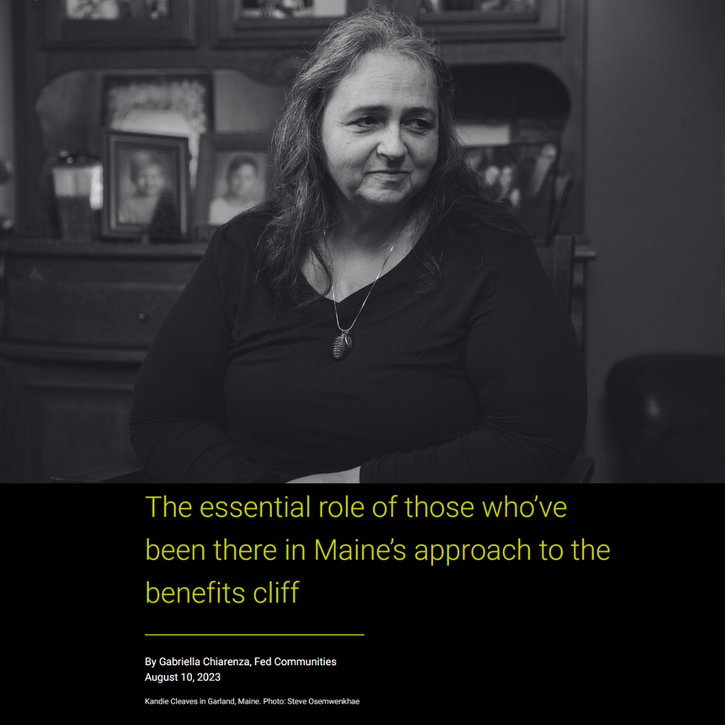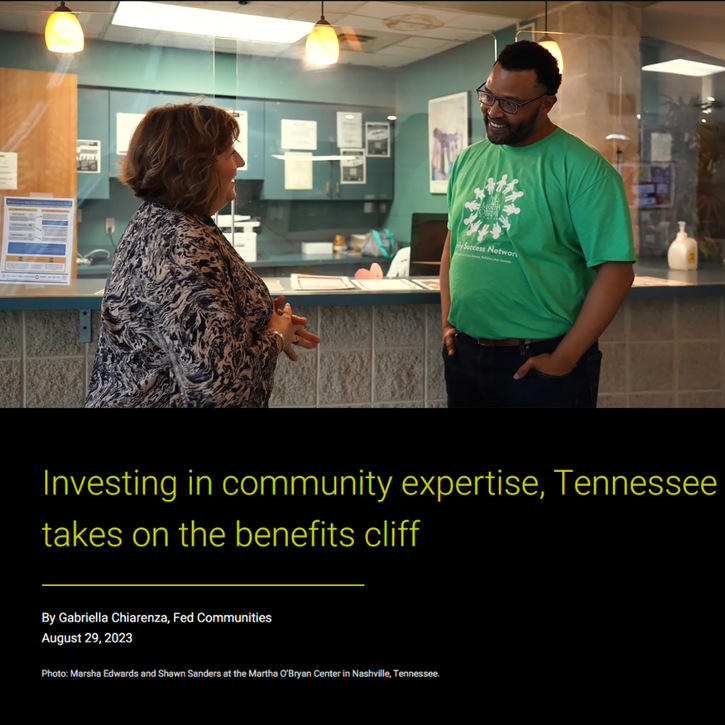If you receive public assistance, External Linkyou can hit a benefits cliff when your income goes up. The increase may mean you now make too much to qualify for the same amount of assistance, but not enough to cover the cost of the benefits you’re losing.

Maine tackles challenges to people with disabilities
For people with disabilities who want to work, the benefits cliff can be even more complicated. Chronic conditions can be expensive to care for without full health insurance coverage. People with disabilities may have a more limited range of job options open to them. And those jobs may not come with full health insurance coverage.
As a young mom, Kandie Cleaves faced an impossible choice: go to work, as she had since age 13, or continue to have access to the medicine she needed to feel well and work at all. “The disability system is set up so that you could only take a very low-paying job and work just a few hours a week,” Cleaves explains. If you want to work more than that, you risk losing the level of disability and health care benefits you need to survive before you have the income you need to cover what’s lost.
In one External Linknew story from Fed Communities, find out firsthand how people are navigating these challenges and the essential role of those who’ve been there in Maine’s approach to the benefits cliff.

Tennessee uses state funding for a wide-ranging pilot project
Earlier this year, Nashville mom Mackeisha Jenkins was promoted to assistant manager at the restaurant where she worked. The new role came with a raise. “When I first got bumped up, I was thinking, I can do more for my kids,” she said. “It was a joy.” That is, until she learned what the promotion would cost her. Because of the roughly $200 more in income she would make each month, she was about to lose more than $800 in monthly public assistance benefits. Just like that, Jenkins hit a benefits cliff.
In a second new story from Fed Communities, find out how External LinkTennessee chose to put a reserve of public assistance dollars to active use in tackling the benefits cliff. State funding jumpstarted a pilot program based in the expertise and community roots of local anti-poverty organizations. Over three years, the pilot will help 900 families navigate benefits cliffs. Experts are closely watching this innovative, large-scale approach to see what lessons it may offer for other communities and national strategies.
